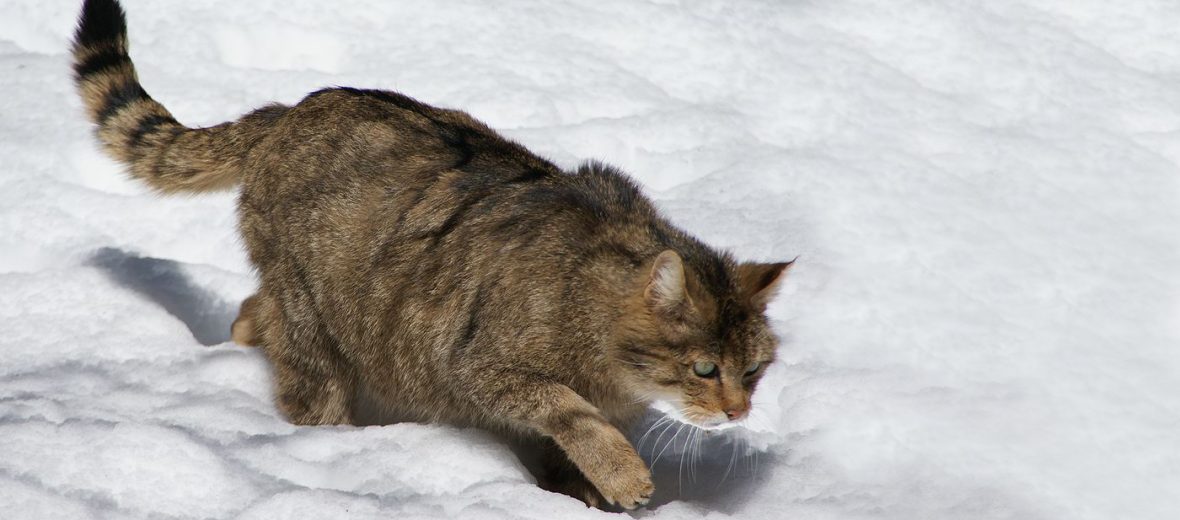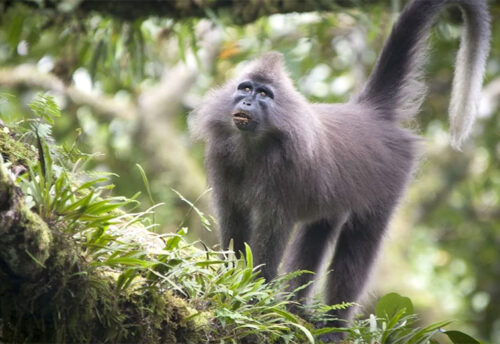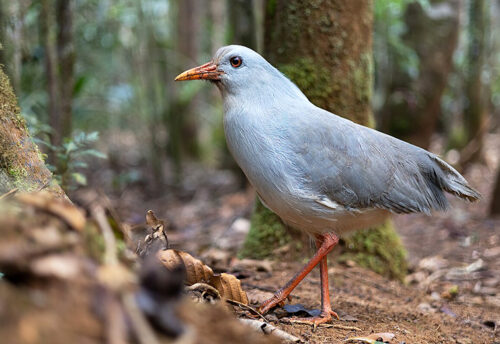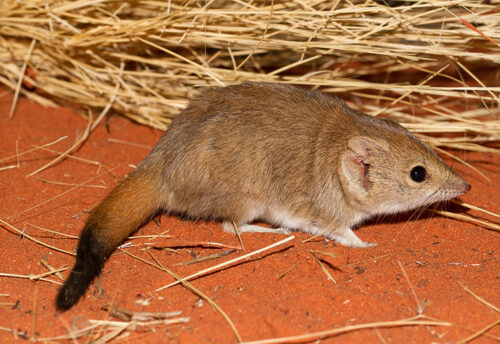
The European wildcat can be found throughout western and eastern Europe. They can be spotted in woodlands, grasslands, scrublands, broad-leaved forests, mixed forests, and along riparian habitats. Due to habitat destruction at the hands of agriculture and aquaculture; hunting; trapping; and invasive species (and with them disease), these felines are listed as Endangered by the IUCN. Their populations are also decreasing.
First the Stats…
Scientific name: Felis silvestris silvestris
Weight: Up to 18 lbs.
Length: Up to 36 inches
Height: Up to 30 inches, at the shoulders
Lifespan: Up to 15 years
Now on to the Facts!
1.) These cats evolved during the Cromerian Stage an estimated 866,000 – 478,000 years ago.
2.) Their direct ancestor was the now extinct Martelli’s cat (Felis lunensis).
3.) While mainly nocturnal (active at night) in populated regions, these cats also sometimes exhibit diurnal (active during the day) activity in undisturbed regions.
4.) They tend to be ambush predators that lay in wait for passing prey opportunities.
5.) European wildcats prey on hamsters, rats, mice, voles, wood mice, European polecats, martens, stoats, and Least weasels. They have also been known to hunt the fawns of roe deer, red deer, and chamois.
But wait, there’s more on the European wildcat!
6.) Prey is killed via piercing the neck or occiput with its fangs.
7.) These cats are solitary, like most cats. They only come together to mate.
Did you know…?
These felines can leap up to 9.84 feet.
8.) Scent marking and scratching is used to denote territory and intent to mate.
9.) European wildcats utilize abandoned burrows as hides. When threatened, they will retreat to said burrow for safety.
10.) These wildcats are, like other cats, polygynous (1 male mates with multiple females).
But wait, there’s still more on the European wildcat!
11.) Females undergo up to a 68 day gestation (pregnancy) that yields up to 7 kittens.
12.) Kittens begin hunting with mom at around 60 days.
13.) The kittens leave mom at around 5 months of age to establish their own territories.
14.) Red foxes, hawks, owls, and other birds of prey hunt wildcat kittens.
Now a Short European Wildcat Video!
Be sure to share & comment below! Also, check out the Critter Science YouTube channel. Videos added regularly!
Want to suggest a critter for me to write about? Let me know here.



